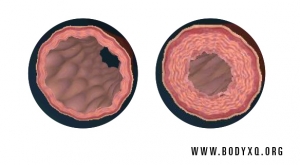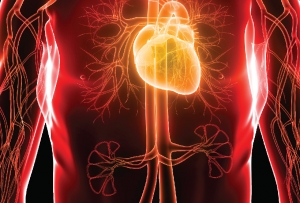In our previous Health Science News Page, we discussed some of the physiological changes that women face throughout their lifetimes such as puberty, menstruation, pregnancy, lactation, and menopause. A woman’s body needs extra nutritional support during these physiological transitions because her cardiovascular, endocrine, nervous and immune systems face different challenges than men due to the fluctuating hormones at different stages of life. In addition to heart disease and cancers, women are more often diagnosed with autoimmune diseases, arthritis, osteoporosis, and depression. Therefore, it is crucial to provide appropriate nutritional support to ensure the optimum function of the cells building these systems in a woman’s body.
In addition to several aspects of the empowerment of women on International Women’s Day on March 8th, we would like to bring up a largely unrecognized issue of the rising rates of chronic health conditions in women. Did you know that many health issues affect more women than men?
Despite ever increasing prescriptions for the cholesterol-lowering drugs knows as statins, cardiovascular disease continues and is expected to increase 40% worldwide by 2030. Atherosclerosis, the underlying cause of heart attacks and strokes, causes a staggering 17 million deaths each year.
This disease persists because conventional medicine has consistently failed to address its root causes; instead it focuses merely on its symptoms by mechanical lowering of blood cholesterol levels, blood pressure, and blood sugar with drugs. It is now becoming evident that targeting blood cholesterol has not been successful in controlling heart disease.
Scurvy (known as “Sailor’s disease”) is a condition resulting from a complete depletion of ascorbic acid (vitamin C). It is a fatal disease characterized by a slow dissolution of connective tissue throughout the body including the walls of the blood vessels. This disease was quite common in earlier centuries, especially among sailors whose diet was deprived of vitamin C. During long voyages at sea many died within months from tremendous blood loss. Today fully developed scurvy is rare; however, subclinical scurvy is very common especially in the elderly, infants, children on special diets, and people with poor dietary habits.
Heart attacks and strokes have consistently remained the leading causes of deaths. Atherosclerosis, the underlying cause of these diseases, results in 17 million deaths each year. Yet, high blood cholesterol levels, a fatty diet, and obesity have been blamed as the causes of heart disease. However, cutting down dietary fat and the artificial reduction of blood cholesterol with cholesterol-reducing medicines have not been successful in addressing this issue. Atherosclerotic plaques occur primarily in the coronary arteries rather than in the entire 60000-mile-long vascular system. The absence of plaque in the veins and the fact that animals do not suffer from atherosclerosis while humans do cannot be explained by conventional medicine and the cholesterol theory of heart disease.
Heart Failure is a serious health condition where the heart is unable to pump enough oxygenated blood to other parts of the body. According to the Centers for Disease Control and Prevention (CDC), about 5.1 million people in the US are affected by heart failure and about 40-50% of them die within one year of diagnosis. The economic impact of heart failure is huge, as the national heart failure treatment costs average about $32 billion including the work absences. Worldwide, approximately 23 million people suffer from heart failure.
Approximately 40% of the world population and almost one in three adults in the US have high blood pressure, which in individuals with additional genetic predisposition to heart disease greatly increases their risk of heart attacks and stoke. According to the World Health Organization, heart disease contributes to 17 million deaths worldwide each year, including 4 million deaths in Europe and 600,000 in the US.
Despite ever increasing prescriptions for high blood pressure and cholesterol reducing medications, cardiovascular disease is expected to increase to 40% by 2030. This is because conventional medicine does not address the root causes of these conditions, but focuses instead on the mechanical lowering of blood pressure or cholesterol readings with highly profitable drugs.
Connective tissue is the most abundant type of tissue in our body. The shape and form of the body, including its organs, muscles, bones, and cartilage, are determined by the properties of connective tissue. Skin, blood, blood vessels, adipose tissue (fat cells), tendons, ligaments, and teeth are various examples of connective tissue. Therefore, the term “connective tissue diseases” encompasses a wide range of ailments; some of them are inherited, while others develop as autoimmune diseases due to excessive inflammation. Examples of autoimmune connective tissue diseases are scleroderma, lupus, rheumatoid arthritis, vasculitis (inflammation of blood vessels), mixed connective tissue diseases, etc.







